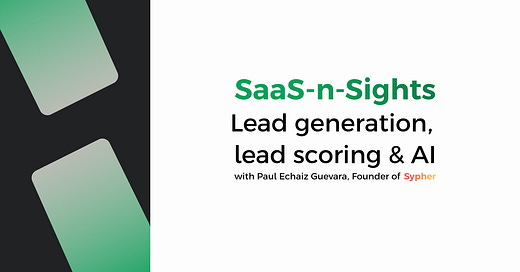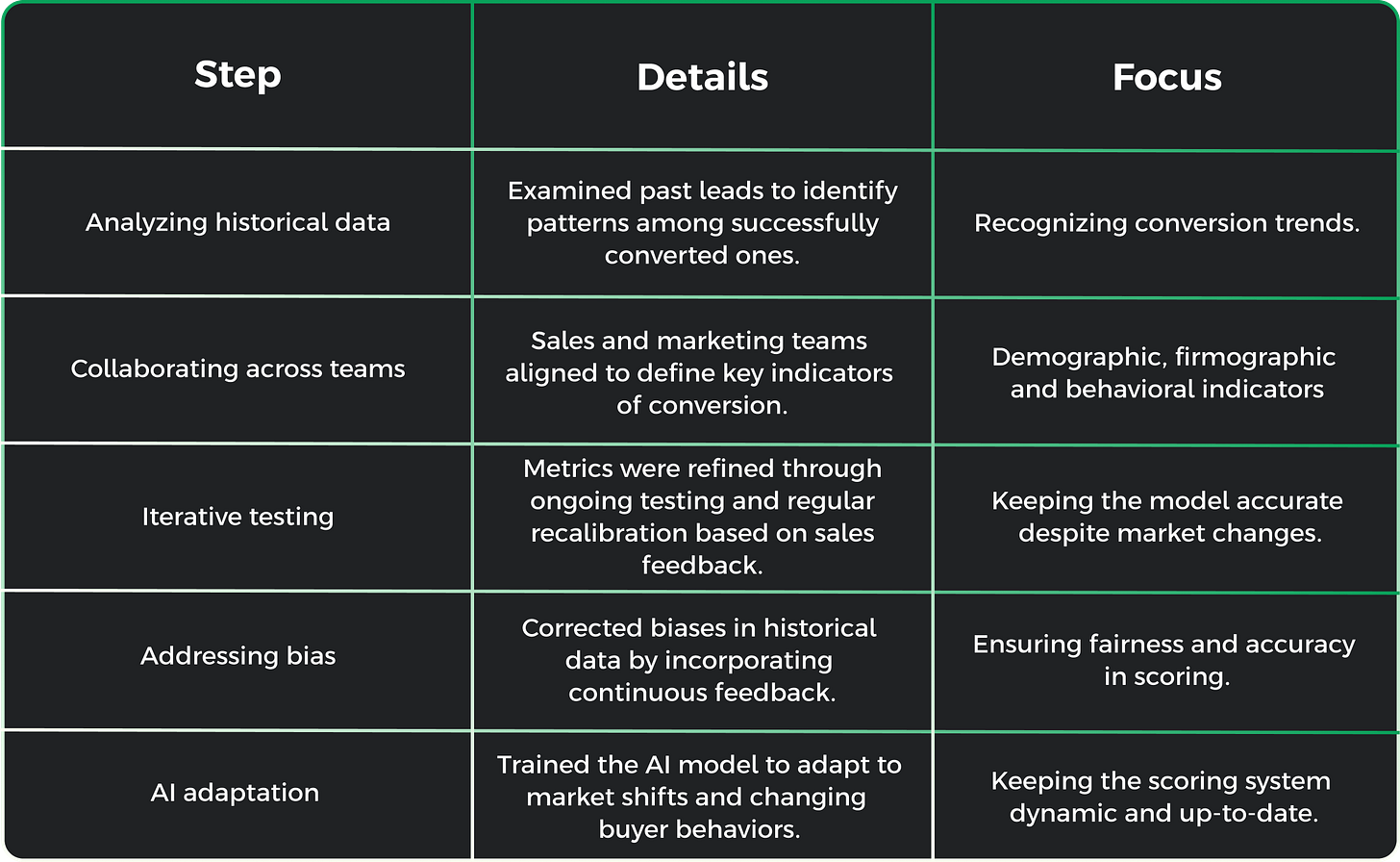SaaS-n-Sights: lead gen, lead scoring and AI with Sypher
In this part of SaaS-n-Sights series, we talked about how Sypher's team run inbound, outbound and lead scoring automations.
I’ve been thinking about sharing experiences from SaaS professionals for a while, and today I’m making a start with Paul Echaiz Guevara, Founder & COO of Sypher.
We had a great chat about inbound and outbound strategies, their challenges, and how lead scoring and AI are shaping their lead gen.
The start
“Outbound is about going out and finding opportunities. It’s fast and proactive, but often feels like starting a cold conversation. Inbound, on the other hand, is slower to build but creates warm, engaged leads who are already interested in what you’re offering.”
Outbound = quick wins with cold leads.
Inbound = steady growth with engaged leads.
Both have their place, but their effectiveness depends on your current goals.
Start by asking yourself: Do you need immediate opportunities, or are you ready to invest in a long-term strategy?
Why they chose outbound FIRST?
Paul explained their decision to prioritize outbound:
“As a growing company, we needed to accelerate quickly. Outbound gave us the ability to actively reach prospects without waiting for organic traffic. It also allowed us to refine our value proposition by testing it with different segments.”
This strategy helped Sypher build a sales pipeline, even before their inbound efforts were ready.
What metrics they track?
Paul’s team focuses on these KPIs:
Email open and response rates.
Lead-to-opportunity conversion rates.
Sales cycle length.
“The success of our outbound strategy is measured by their ability to reach a high volume of qualified prospects, shorten conversion times, and contribute significantly to revenue growth.”
Building inbound for 2025
Their inbound strategy will be launched at the beginning of 2025 to create a sustainable content-driven approach that generates qualified leads over the long term.
Their goal is to establish a balance where outbound continues to deliver immediate results, while inbound gradually takes over by ensuring a steady flow of interested prospects.
This combination will allow them to reduce their reliance on outbound efforts while strengthening their credibility and market presence.
The pain of automations
When we shifted to lead scoring, Paul didn’t hold back on the challenges.
“One of our biggest hurdles was figuring out which data points actually matter. With so much data available, it’s easy to get lost. We had to prioritize and refine constantly.”
With a wealth of available data—demographic, firmographic, and behavioral—it was difficult to identify the most relevant criteria for their target segments.
Additionally, integrating various data sources into a unified scoring model posed technical challenges for them, as each source required specific adjustments to ensure data consistency.
Another crucial challenge was the need to continuously clean, enrich, and update data across the company’s tools, such as the CRM. They found that outdated or inconsistent data negatively impacted lead scoring accuracy, prompting them to establish a rigorous data quality management process.
How did they deal with this pain?
Paul shared Sypher’s step-by-step approach to overcoming these challenges:
Analyzing historical data: They examined past leads to find patterns among successfully converted ones.
Collaborating across teams: Sales and marketing teams worked together to identify the strongest indicators of conversion potential, such as:
Demographic: Industry, company size.
Firmographic: Revenue, technology stack.
Behavioral: Website visits, content engagement.
Iterative testing: They refined metrics through ongoing testing and recalibrated the model regularly based on sales feedback. This ensured the model stayed accurate despite market changes.
Addressing bias: They identified biases in historical sales data and corrected them by incorporating continuous feedback from the sales team about lead quality post-conversion.
AI adaptation: Regular training of their AI model helped it adapt to market shifts and changing buyer behaviors, ensuring the scoring system remained relevant.
AI in the future of sales automations
“AI is no longer just a tool—it’s a necessity. It helps us automate tasks we couldn’t scale manually, like real-time lead prioritization or personalized outreach.”
At Sypher, AI plays a central role:
It identifies high-potential leads in real time based on behavior.
It suggests personalized “Next Best Actions” to maximize engagement.
It automates reactivation campaigns for inactive prospects, ensuring no lead is left behind.
“AI will analyze prospect behaviors in real time, suggest personalized actions, and generate hyper-targeted campaigns at scale in the future.”
Impact of automating lead scoring on sales
“With automated lead scoring, the sales team can now prioritize their efforts on high-potential leads, focusing on those with the greatest likelihood of converting.”
Automating lead scoring transformed how Sypher’s sales team approaches their work:
The team now focuses on high-potential leads, making their efforts more effective.
Knowing leads are vetted and scored accurately increases trust in the process and boosts morale.
With automation reducing time spent on low-quality leads, the team can focus on converting top prospects.
Measurable improvements in their pipeline
Since automating lead scoring, Sypher has seen significant results:
20% reduction in sales cycle: Faster lead-to-opportunity conversions.
Higher win rates: More targeted engagement has improved success rates.
Efficiency gains: The team spends less time on unqualified leads, focusing on high-priority opportunities instead.
Quick advice from Paul
“Lead scoring is highly valuable for prioritizing a large volume of inbound and outbound leads, and it’s also extremely effective for reactivating inactive prospects. To ensure accurate scoring, it’s essential to collect comprehensive data that can be analyzed and integrated into the lead scoring model.”
See you on the next SaaS-n-Sights 👋









